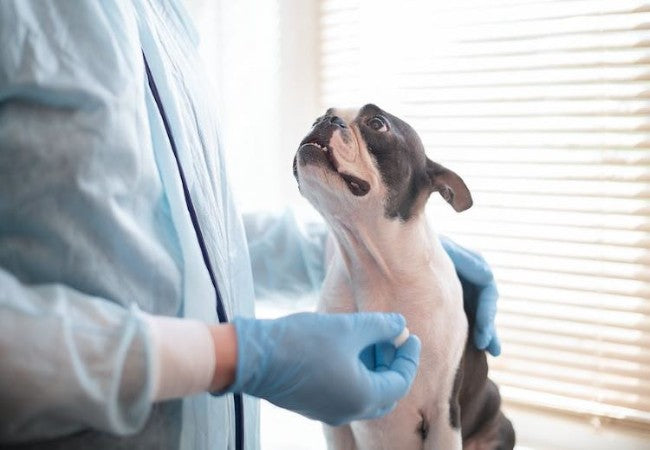How Dogs Get Heartworm Disease: Vet‑Approved Guide for 2025 🩺🐶

In this article
How Dogs Get Heartworm Disease: Vet‑Approved Guide for 2025 🩺🐶
By Dr. Duncan Houston BVSc
Heartworm disease is caused by the parasite Dirofilaria immitis, which matures into foot-long worms in a dog’s heart and pulmonary arteries. Understanding how dogs become infected can save lives.
1️⃣ Mosquito Transmission Cycle
- An infected animal (dog, coyote, fox) carries microscopic heartworm larvae called microfilariae in their bloodstream.
- A mosquito bites and ingests the larvae, which develop into infective larvae (L3 stage) inside the mosquito over ~2 weeks.
- The same mosquito bites a healthy dog and transmits the larvae via its saliva. The larvae penetrate the dog’s skin and migrate into tissues.
2️⃣ Larval Development in Dogs
The larvae mature through several stages (L3 → L4 → immature L5), eventually reaching the pulmonary arteries and heart over ~4–7 months. Adult worms mate and produce new microfilariae, perpetuating the cycle.
3️⃣ Symptoms to Know
Initially, dogs may seem healthy. Common signs include:
- PERSISTENT COUGH, fatigue, exercise intolerance
- Weight loss, difficulty breathing, sudden collapse
- Advanced stages can lead to right-sided heart failure and death.
4️⃣ How It’s Diagnosed
Dogs older than 7 months should be tested yearly via blood antigen tests detecting adult female worm proteins, and sometimes microfilariae smear or modified Knott’s.
5️⃣ Prevention Is Key
- Start preventive medication at 6–8 weeks of age and continue year-round. Options include monthly oral pills, topical treatments, or 6–12 month injectables.
- Preventatives kill larvae acquired in the past 30 days—but missing even a dose can let larvae mature.
- Annual testing ensures early detection, even if on preventatives.
6️⃣ Treatment vs. Prevention
Treating heartworm involves risk (e.g., embolisms, inflammation) and requires strict exercise rest; prevention is far safer and more affordable.
📊 Quick Lifecycle Overview
| Stage | Where | Timeline |
|---|---|---|
| L1 microfilariae | Infected dog’s blood | Present when adult worms are mature |
| L1 → L3 | Mosquito | ~10–14 days while feeding |
| L3 → L5 | In dog’s tissues | 4–7 months to heart/lungs |
| Adult worms | Heart/pulmonary vessels | Live 5–7 years, produce microfilariae |
🔍 Final Thoughts
Heartworm is a preventable, mosquito-borne disease that can have serious, life-threatening consequences. In 2025, the best protection is year-round prevention, annual testing, and vigilant care. Even one mosquito bite can lead to infection—prevent before it’s too late! 🐕❤️
Need help choosing the right preventative or interpreting test results? Download the Ask A Vet app for expert guidance, anytime. 📱🩺






